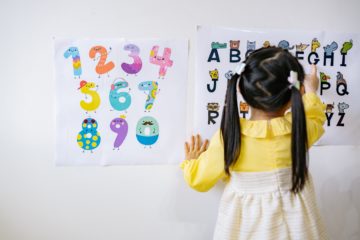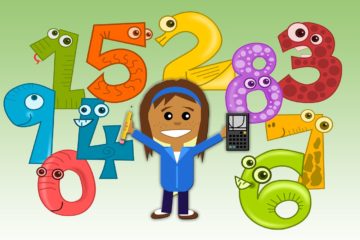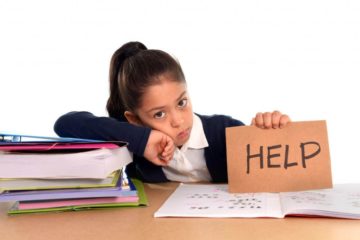Childhood apraxia of speech (CAS) is a motor speech disorder. Children with CAS have problems saying sounds, syllables, and words. However, this is not because of muscle weakness or paralysis. The brain has problems planning to move the body parts (e.g., lips, jaw, tongue) needed for speech. The child knows what he or she wants to say, but his/her brain has difficulty coordinating the muscle movements necessary to say those words.
As defined by the American Speech & Hearing Association (ASHA) [1]
Here are 10 early signs and symptoms of childhood apraxia of speech: [2]
- Limited babbling, or variation within babbling
- Limited sound repertoire
- Inconsistent errors
- Loss of previously produced words
- Increased errors or difficulty with longer or more complex syllable and word shapes
- Omissions, particularly in word initial syllable shapes
- Vowel errors/distortions
- Excessive, equal stress
- More difficulty with volitional versus automatic speech responses
- Predominant use of simple syllable shapes
Other non-speech “soft signs” that may be present include:
- Impaired volitional oral movements (oral apraxia) - difficulty with volitional “smiling” “kissing” “puckering”
- Delays with fine/gross motor skills
- Feeding difficulties that include choking and/or poor manipulation of food
- General awkwardness or clumsiness
Not every child with CAS will have the same signs and symptoms. The brain of each child with CAS will have different strengths and weaknesses in planning out sounds and words. One child may have no trouble using her tongue for speech, but her brain may not be able to make her jaw work in tandem with her tongue, for instance.
Any child suspected of having CAS, ideally, should be evaluated by a speech-language pathologist (SLP) who has experience with CAS. An SLP with experience in CAS will be able to assess whether the child’s problem with speech is because of CAS or in combination with other difficulties that can cause speech problems.
CAS must be differentiated from other disorders like Dysarthria (weakness in the muscular control of the speech mechanism resulting in impairment of motor processes like respiration, phonation, articulation, resonance and prosody), Autism, Sensory Processing Deficits, PDD, etc. However, CAS can often co-exist with conditions like Down’s syndrome, Autism, SPD, Hypotonia, Cerebral Palsy, PDD, etc. Studies have shown that up to 64% of children diagnosed with autism, turn out to have childhood apraxia of speech in addition to autism.
Childhood apraxia of speech (CAS) occurs in children and is present from birth. It appears to affect more boys than girls. This speech disorder goes by several other names, including developmental apraxia of speech, developmental verbal apraxia, developmental verbal dyspraxia and articulatory apraxia. CAS is different from what is known as a developmental delay of speech, in which a child follows the “typical” path of speech development but does so more slowly than normal.
Treatment of Apraxia
[3] Generally, treatment for individuals with apraxia includes physical, speech, or occupational therapy. If apraxia is a symptom of another disorder, the underlying disorder should be treated.
Children with developmental apraxia of speech will not outgrow the problem on their own. Speech-language therapy is often helpful for these children and for people with acquired apraxia who do not spontaneously recover all their speech abilities. [4] Speech-language pathologists use different approaches to treat apraxia of speech, and no single approach has been proven to be the effective over another. Therapy is tailored to the individual and is designed to treat other speech or language problems that may occur together with apraxia. Each person responds differently to therapy, and while, some will make more progress, others may show slow progress. People with apraxia of speech usually need frequent and intensive one-on-one therapy. Support and encouragement from family members and friends are also important.
In severe cases, people with acquired or developmental apraxia of speech may need to use other ways to express themselves. These might include formal or informal sign language, a language notebook with pictures or written words that the person can show to other people, or an electronic communication device such as a portable computer that writes and produces speech.
PlayStreet’s Approach to treating CAS
What CAS is or how this affects a child is still not clearly understood by many in this field. Traditional approaches of speech and language stimulation (traditional speech therapy) continue to be used to build the child’s verbal skills. However, when the child continues to have issues with developing speech movements, only then, do the care providers look for other possibilities. Unfortunately, by trying the traditional forms of ‘speech therapy’ or speech imitation (used in ABA and other such programs) results in delay of several precious years. What builds then is years of frustration because of having no way to communicate with the world and having the opportunity to use only one-way communication (speech) which is already very difficult.
At PlayStreet, we use a combination of programs to help a child with Childhood Apraxia of Speech(CAS). Looking at CAS as a motor speech disorder means that the underlying lack of motor movements needs to be built first before translating those movements to more functional movements for speech. However, the motor movements created are not ‘non-speech’ movements – all the movements created during the program are slowly translated to speech movements at the pace of the child. To achieve this, the Oral Placement Therapy (OPT) program along with the PROMPT (Prompts for Restructuring Oral Muscular Phonetic Targets) therapy is used in conjunction with an Apraxia Program to enable the brain to learn new movements in a tactile based manner rather than in a “look at me, do what I do” manner. Since speech is a tactile-proprioceptive act and tactile learning provides the foundation for motor movement, using a tactile-proprioceptive teaching technique which accompanies traditional therapy would help children improve skill levels though maximizing all sensory systems[5].
Looking at only the ‘speech’ component is also not enough. If overall communication needs are to be developed, then a more holistic approach needs to be adapted to make sure the child’s communication can be taken to the next level. For this reason, it is important for the child to be introduced to an alternative and augmentative form of communication (AAC) so that language and communication continues to develop. If you limit the child by expecting only speech, then you leave the child no avenue to communicate and the child starts to develop certain behavioural attitudes. You can equate to what the child feels by comparing with an adult with very poor muscle tone in their legs and how he/she would feel if he/she were to be asked to get up and start running! Putting so much pressure on a small child is a traumatic experience for the child and ‘speech’ starts being a negative practice, something the care provider should make sure that it does not happen to a child at all costs. AAC DOES NOT IMPEDE SPEECH DEVELOPMENT, and hence should be seriously considered to make sure the child has a way to communicate his feelings, his ideas, his thoughts, his opinions and not be limited by his ‘speech’ to express himself.
References
[1] http://www.asha.org/public/speech/disorders/ChildhoodApraxia/
[2] http://www.apraxia-kids.org/learn-about-apraxia/
[3] https://www.ninds.nih.gov/Disorders/All-Disorders/Apraxia-Information-Page
[4] https://www.kars4kids.org/blog/childhood-apraxia-of-speech-autism-or-both/amp/
[5] Oral Placement Therapy for Speech Clarity and Feeding by Sara Rosenfeld-Johnson.



1 Comment
Riddhi · July 20, 2020 at 8:32 am
I believe in Shereen ma’am.
She is a fabulous person and very honest person towards her work.
I believe every child is progressing in their goal and we as parents work hard with our kids and never give up.